Much like the JobKeeper payment scheme has been put in place to help us recover from the economic impact of the COVID-19 pandemic, in the 1930s it was the Intermittent Relief Work Scheme that kept the men of Ipswich employed.
It was during the Great Depression that councils of the day, Ipswich City Council and Moreton Shire Council along with the Main Roads Department played a significant role in unemployment relief work.
The Intermittent Relief Work Scheme started in Ipswich on 5 May 1931, when 234 men commenced work.
At the close of 1933, there were 1,034 men were employed under the scheme.
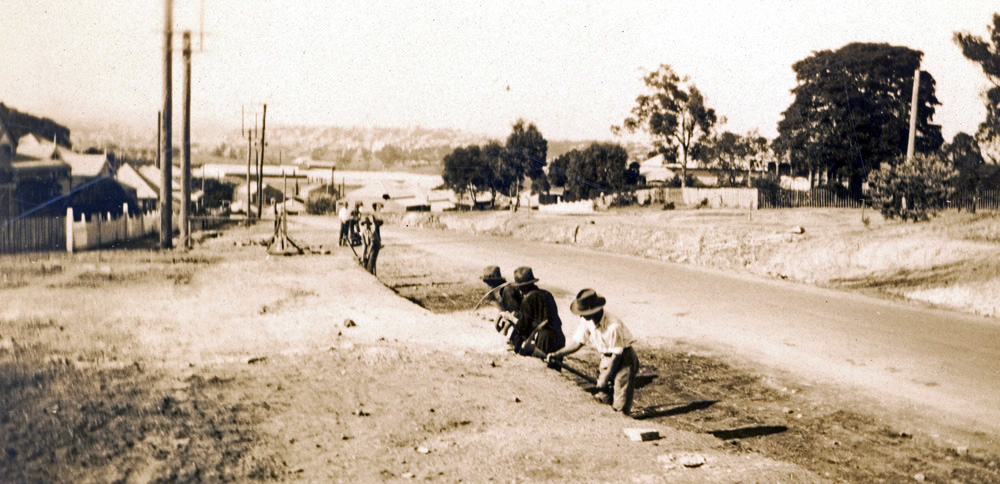
Unemployed workers constructing a cutting on Raymonds Hill (now North Ipswich), opposite St Josephs Catholic Church, during the Great Depression in the 1930s. Image: Picture Ipswich
The amount expended on works carried out by the men during the year 1933 was £61,920, which is in today’s terms, just over $6m.
The Main Roads Commission paid £49,879 ($5m in today’s terms) with the remainder of the cost £12,040 ($1.2m) to the council.
Ipswich Deputy Mayor and Division 3 Councillor Marnie Doyle said that you can see that council tried to ease the burden from those in need at that time, which is something this council continues to do today.
“Council has waived footpath dining fees for local businesses for this year and during 2020 provided several relief programs aimed at helping those who suffered the most under the impacts of COVID-19,” Cr Doyle said.
“We take our responsibility – in conjunction with the state and federal governments – seriously to help maintain and ultimately grow the local economy, ensure jobs are safe, and to support Ipswich businesses through this period of unforeseen hardship.”
One of the tasks undertaken by the workers of the scheme in the 1930s was the stone kerbing and channelling at footpaths, still seen throughout Ipswich today.
Footpaths along the main road between Bundamba and Redbank and from Bundamba Bridge to Goodna though Blackstone, Dinmore and Redbank were built by 160 men.
The construction at the time was stone pitching which consists of rock set into mortar exposing the stone.
It is designed to spread the flow of water across the hard surface and around the protruding rock.
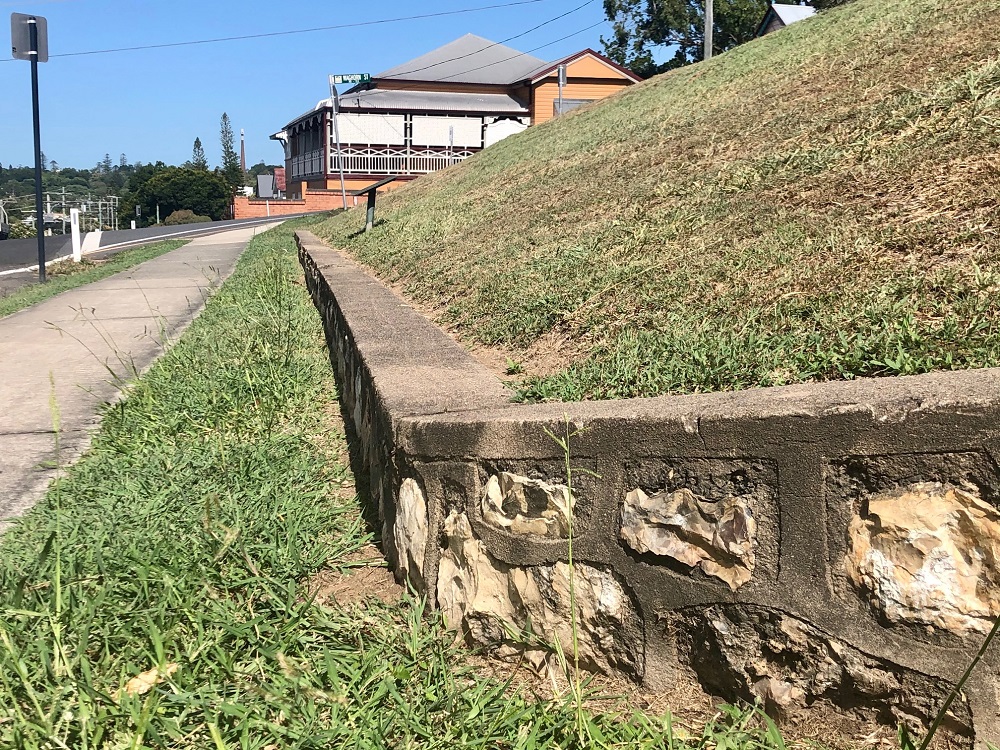
Stone kerbing in Roderick Street, Ipswich
Councillor Doyle said council is keen to protect this historic stone kerbing dotted around Ipswich.
“A lot of these stone kerbing areas are heritage listed and will be preserved for generations to come,” Cr Doyle said.
Division 3 Councillor Andrew Fechner said one of Ipswich strengths is the way the community embraces its heritage areas.
“We are a young community with a median age of 32, but that doesn’t mean we don’t love our history,” Cr Fechner said.
An excerpt from Ipswich in the 20th Century by Robyn Buchanan on the Great Depression
Ipswich had an industrial-based economy and unemployment was high – for example one-third of miners were out of work in 1932.
The council received State and Federal Government grants and loans to help generate employment.
Many of these relief workers were apparently not accustomed to the type of labour offered.
As on work sites today, it was a case of “No boots, no job” and most of them did not possess work boots or the money to buy them. After they presented a petition, council issued vouchers to allow them to get boots.
Initially, most of the funding was used in road works, drainage and bridge repairs.
Men also chipped weeds, cleared the riverbank, worked in quarries to prepare gravel and road metal, built fences and built a cement footpath in Warwick Road, the first of its type in Ipswich.
The list of work indicates that the majority of streets at this time were still gravel including some inner-city ones such as Gordon, Murphy and Milford Streets.
Some work was also done to improve school grounds and the golf course.
Council struggled financially during this period. Providing staff to supervise the relief workers strained resources.
Rates arrears also soared as people lost their jobs, and although the Finance Committee recommended selling the property of anyone who was three years overdue, council was reluctant to do so.
As the Depression continued, real estate prices dropped, and between 1931 and 1937, the official valuation for Ipswich land dropped 18 per cent.
Council rates are levied on the valuation of properties and as this dropped, so did council’s income.
The only solution was to raise the rates to maintain the same income but council was again reluctant to do so – aldermen argued that if they were willing to forgive people unable to pay any rates, it seemed unfair to impose an extra burden on those who were actually contributing.
They were hard times, and the Great Depression left its psychological mark on virtually everyone who lived through those years.
“The workers obviously took pride in their work as the quality is still very good and these kerbs are still walked on today.”
Some other examples of this stone kerbing can be still seen in heritage area such as Roderick Street, Omar Street, Pine Mountain Road, Waterworks Road and others.
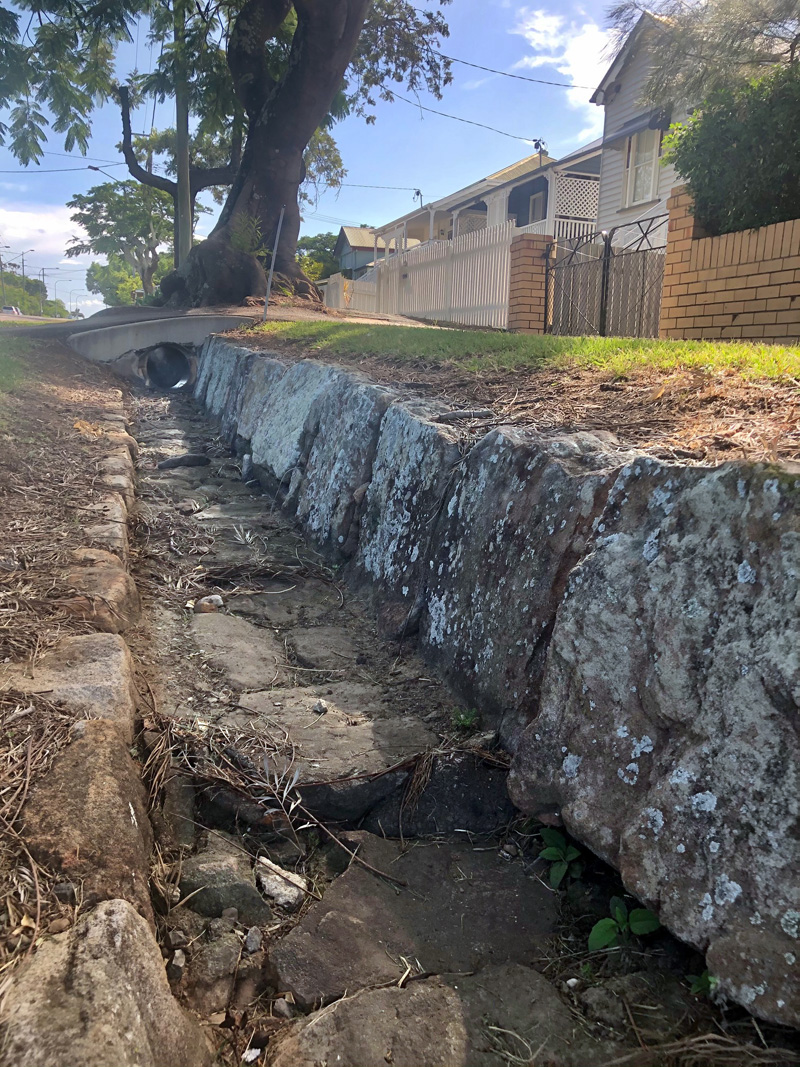
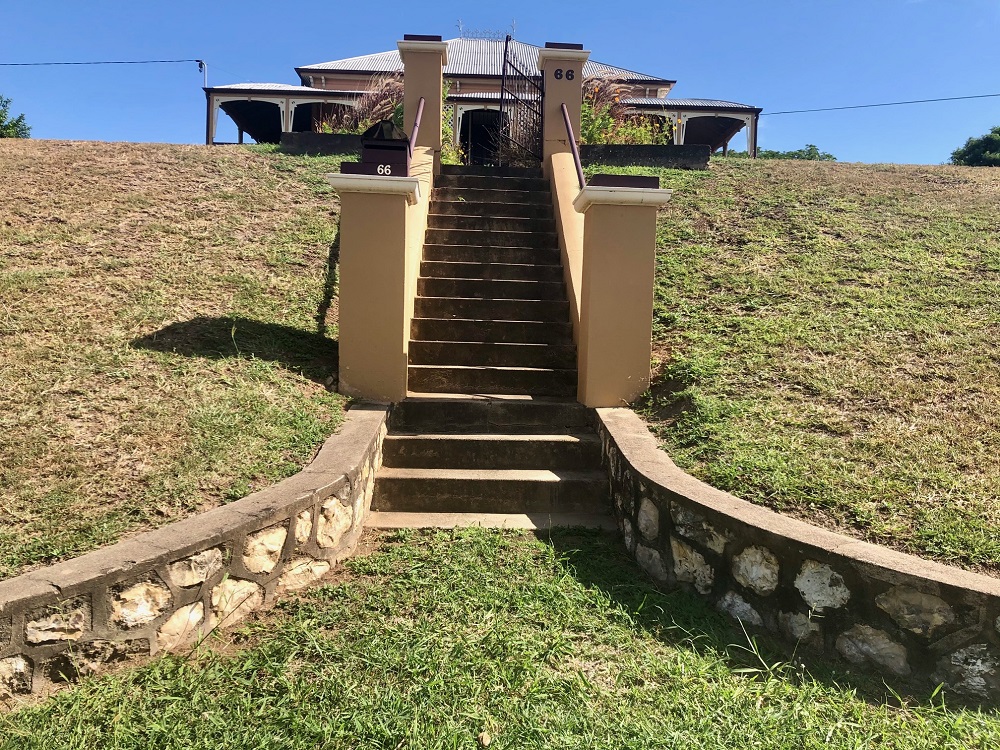
(above) Stone kerbing in Roderick Street, Ipswich.
(left, vertical) Stone kerbing on Brisbane Road, Redbank
Fast forward to 2021 and there are planned works on Brisbane Road between Mine Street and Brisbane Terrace at Redbank.
Council is planning to undertake road pavement repairs followed by road resurfacing works in the second quarter of 2021.
There will potentially be partial lane closures and road detours, some night work and traffic control.
The area the works are being done does not impact the heritage stone kerbing on Brisbane Road at Redbank.
Find out about Ipswich City Council’s capital works program by searching in the interactive mapping system.

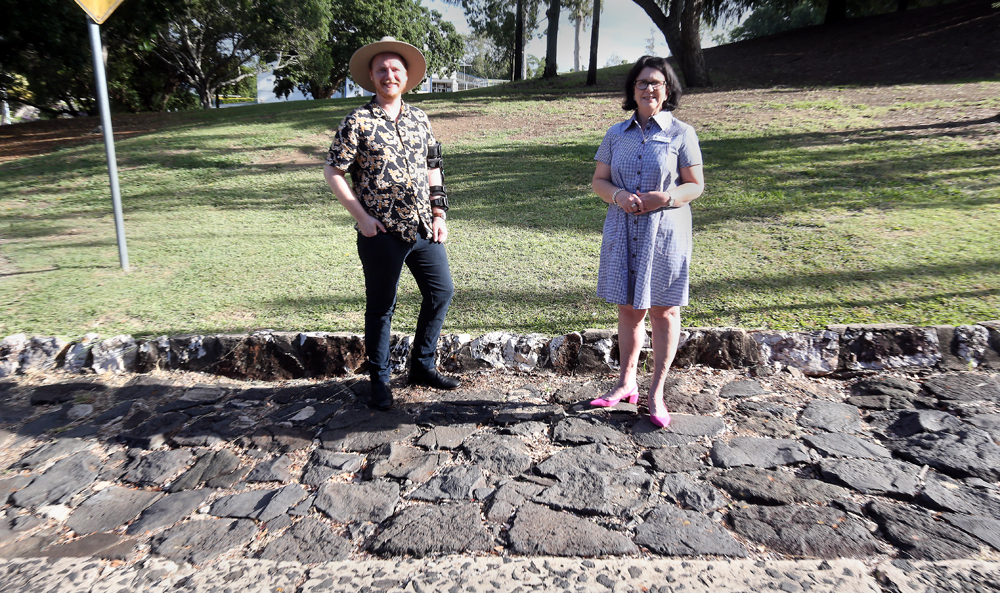

This stonework looks great where ever it is situated around the Ipswich suburbs.
Dinmore also has this stone work in Mason Lane. Though I must admit it is not in good condition. It was drawn to Council attention by myself in February 2003 when I was writing “Dinmore -New Chum History 1859 – 2005”.
Council did inspect the stone block gutter / kerbing but advised at the time there was better preserved kerbing in Waterworks Rd North Ipswich and Chermside Rd, East Ipswich. Over the last 18 years it has deteriorated more.
Council informed me that the Draft New Ipswich Planning Scheme was being updated and the Mason Lane Dinmore could be listed as an “Identified Places of Interest”.
In my submission I indicated that it is the only remaining kerbing of its type in Dinmore and that it was built during the Great Depression. I still would like to see some recognition because of its cultural significance.
Thank you for sharing… I love seeing our history preserved and would like to see and hear more of the history of our beautiful city.